We discover the buildings and backdrops across the country that have inspired some of the nation’s greatest landscape artists
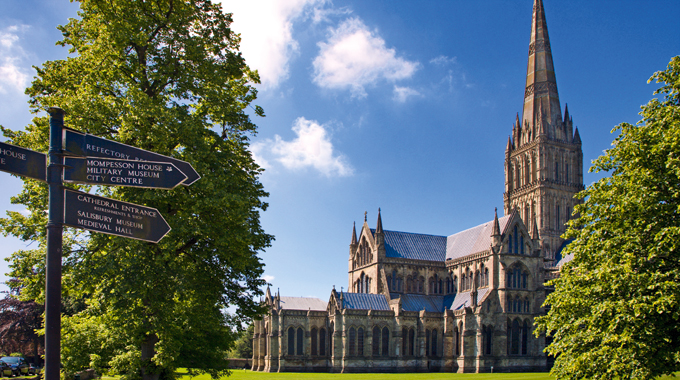
From the mountainous peaks of the magnificent Cader Idris at the southern end of Snowdonia National Park pink-tinged clouds scud across the endless sky, rugged hills stretch away into the distance and glass-like lakes glint in sculpted hollows. This incredible Welsh vista and others like it inspired the man often credited as being Britain’s first landscape painter, Richard Wilson (1714-1782), and a great tradition of British landscape painting followed in his wake.
Before the 18th century, however, landscapes were mostly painted as backgrounds to portraits, typically suggesting the estates of a landowner, and often painted by an artist who had never visited his sitter’s lands. The rise of watercolour painting, mostly of landscapes, in the 18th century reflected not only a change in artistic trends but a transformation of society’s attitudes as well. By the beginning of the 19th century the leading British artists were dedicated landscapists, painting romantic interpretations of the cities and countryside around them.

While art continues to be a sign of societal change today, many of the rural scenes captured by these great painters remain much as they were. Two of the biggest names in British art must be J M W Turner (1775-1851) and John Constable (1776-1837), and both found their inspiration from the landscapes around them, capturing their surroundings in paintings that are now considered among the finest in the world.
Constable, who often painted the rural enclave of Dedham Vale in the heart of Suffolk where he grew up, would still recognise the countryside he observed so intimately. Flatford Mill, once owned by the artist’s father, looks almost the same today in this hidden corner as it does in his painting Scene on a Navigable River – only the agrarian workers and their carthorse have disappeared.
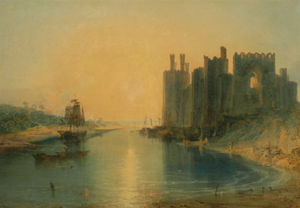
An almost exact contemporary of Constable, Turner, or ‘the painter of light’ as he became known, was an extremely prolific artist, producing over 550 oil paintings and 2,000 watercolours in his lifetime. He painted all over Britain, from Sussex to Skye, and from steam trains to ship wrecks. The Turner Contemporary gallery opened in 2011 in the small seaside town of Margate in Kent, a place that Turner visited and painted many times, and nearly two centuries since his visits it is still possible to see why he remarked to the influential writer and art critic John Ruskin that “the skies over Thanet are the loveliest in all Europe”. This part of Kent drew Turner back time and again and his vibrant, unconventional use of colour and near abstract style perfectly characterised the East Kent seascapes and fine views of Margate harbour.
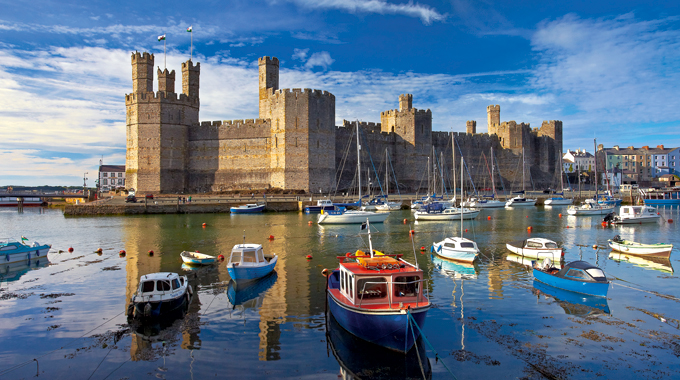
Before these two great landscapists, celebrated artists such as Gainsborough (1727-1788) and Stubbs (1724-1806) were making the transition from portrait to landscape painting. Although famous for likenesses of his wealthy clients, Gainsborough’s private inclination was to paint more rustic scenes. In his last years he painted relatively simple landscapes and is credited (along with Wilson) for originating the 18th-century British landscape school. His quiet pastoral paintings, often featuring farm labourers and animals, reveal the beauty of rural Britain.
Richard Wilson was the first major British painter to primarily concentrate on landscape, and is one of the most distinguished painters Wales has ever produced. Constable, Turner and John Crome acknowledged him as an influence and even painted the same views, such as the Gothic Conwy Castle and the ruined fortress of Dolbadarn Castle in North Wales. A visitor today can still see the same view of Dolbadarn, the round stone keep standing proudly against its backdrop of craggy peaks. In fact, many of the timeless landscapes that Wilson painted can still be seen almost exactly as he would have viewed them – his painting of the lake of Llyn-y-Cau, on the mountain of Cader Idris in North Wales, reveals a dramatic watery amphitheatre that looks much the same today. Others, such as his Westminster Bridge under Construction, reveal a city and country very different from our own, and give us a valuable insight into the past.
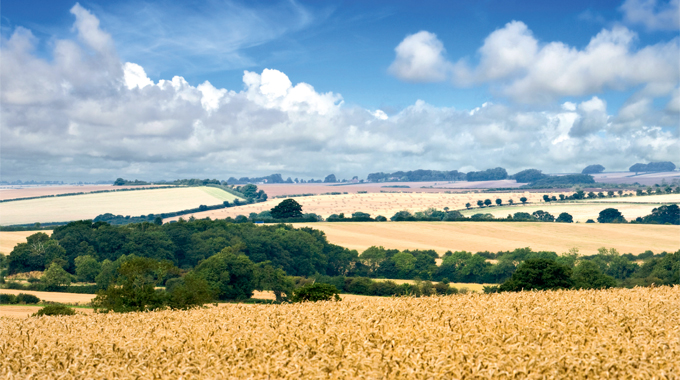
Peter De Wint (1784-1849) also toured and painted in Wales but many of his panoramic landscapes and haymaking scenes are set in Lincolnshire in the east of England. Visitors seeking breathtaking views will appreciate the endless undulations of cliffs, patchwork fields, woodlands and rivers that still characterise the area today. From the Lincolnshire Wolds, a range of hills designated an Area of Outstanding Natural Beauty, there are vast views over the flat fens below and it is possible to make out some of the landmarks painted by De Wint, such as Lincoln Cathedral, and St Botolph’s – the largest parish church in the country – which was also sketched by Turner.
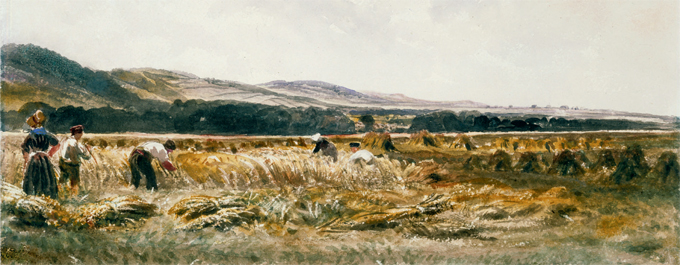
Out of the countryside and into the towns and cities, 19th-century painters were moving away from the detailed portraits of London society pioneered by William Hogarth (1697-1764) and focusing on the architecture of the cities themselves. John Atkinson Grimshaw (1836-1893) painted scenes of Leeds, Liverpool, Glasgow and more, while the distinctive style of L S Lowry (1887-1976) perfectly captured the industrial districts of northern England during the early 20th century. Grimshaw was drawn by the atmospheric night-time docks in cities he visited, such as Humber Docks, Hull and Salthouse Dock, Liverpool.
A large collection of Lowry’s work is on permanent public display in The Lowry, a purpose-built art gallery on Salford Quays. He often painted the surrounding area, and other northern towns, as well as views of London and Cumbria. Senhouse Street, Maryport was painted from South Quay in Cumbria, and the view looks much the same today. Now, the artist dominates sales of British Modern Art and an impressive collection of his works, which included seascapes and landscapes as well as his instantly recognisable views of working-class city life, sold in November 2011 for £17.7 million.
In contrast to these built-up urban views, perhaps one of the most popular haunts of artists in Britain is Cornwall. The Newlyn School of artists that included Stanhope Forbes (1857-1947) painted in a fishing village adjacent to Penzance from the 1880s until the early 20th century, while another artistic community settled in St Ives. Alfred Wallis (1855-1942) spent most of his life as a fisherman there and his naïve art paintings were said by the painter Ben Nicholson to be “something that has grown out of the Cornish seas and earth and which will endure”. The romantic landscape and special quality of light continued to attract hundreds of artists to St Ives and by the 1920s it was something of a bohemian colony. Today England’s most coastal county has the largest concentration of artists outside of London and the Tate St Ives gallery that opened in 1993 confirmed the town’s status as a major cultural centre.
A very different sort of seaside resort can be found at Bridlington, in the East Riding of Yorkshire. Here, where the winds blow in across the North Sea and the waves crash against the great spur of Flamborough Head, another artist has been inspired to produce some of his finest work. David Hockney (1937- ) is one of Britain’s best-known artists, and is still producing exhibitions that continue to confound critics and broaden artistic boundaries. While he has always been closely associated with the sunnier climes of California, for the last decade Hockney has been based in Bridlington, where he was born. His most recent works from here have redefined him as an important painter of the English countryside.
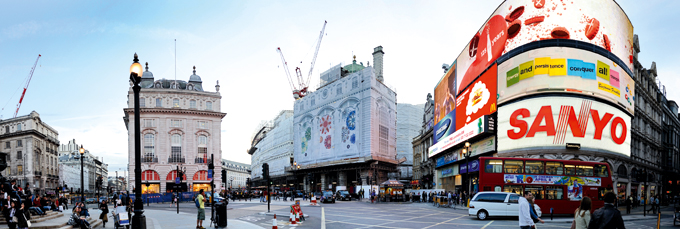
In his fascinating book A Bigger Message – Conversations with David Hockney, the art critic Martin Gayford quotes the artist as saying: “I’m not sure which modernist critic said that it wasn’t possible to do anything with landscape any more. But when people say things like that I’m always perverse enough to think, ‘Oh, I’m sure it is’ […] because every generation looks differently.”
And it is true that the variety of Britain’s landscapes continues to inspire both established and emerging artists. Becky Samuelson, who lives and paints in the Isle of Wight, says that it is the diversity in our landscape that stimulates her: “The hugely varied geology makes the island a special place to live and work. Surrounded by water with great natural light, it offers unparalleled subject matter.”
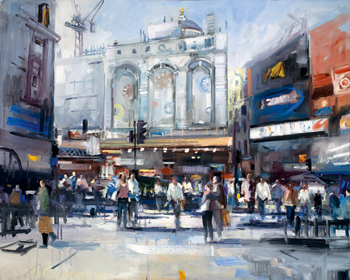
Modern artists still find inspiration in Britain’s cities too and David Atkins (1964- ) says London has always held a fascination for him: “As a boy my father would frequently take me on a journey by foot through London,” he says. “I remember the delight of seeing the river with its bridges and familiar landmarks, of visiting museums and galleries and exploring the streets and parks. In all its splendour, the Capital seemed a world away from the suburban life.”
Those first impressions of London have remained with him and are reflected in his vibrant drawings and paintings that encapsulate the excitement and energy of the city. And the very finest landscape artists manage to do just that – capture the essence of a bustling city, a stormy sky, or a wind-swept coastline in paint, immortalising the best British backdrops for generations to come.







 © 2024
© 2024